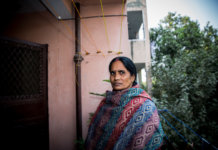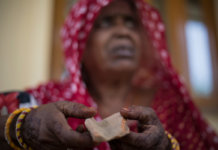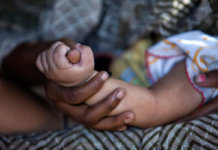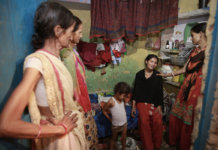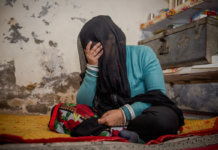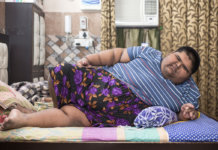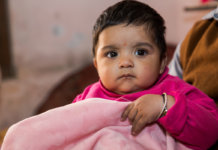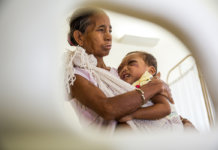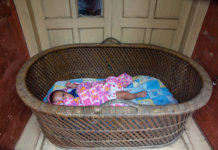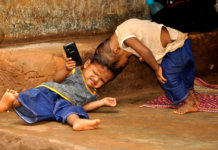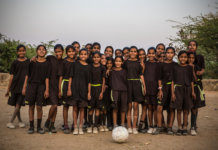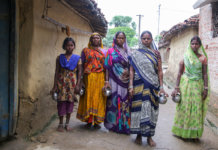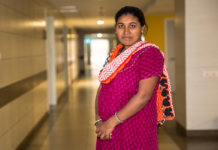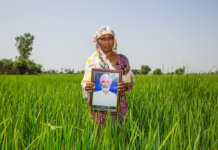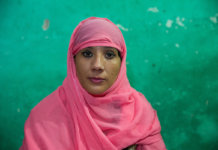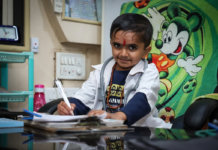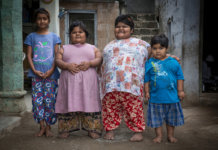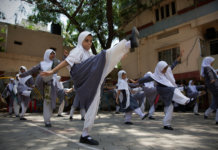A man in Bangladesh says he’s been happily married to both a mother and her daughter for 45 years thanks to ancient tribal traditions.
Shailesh Dalbot, now 60, was required to marry Shormi Nokrek, 83, after she was left widowed and customs dictated the arrangement but he also married her daughter Jellaba Nokrek who was approximately seven-years-old at the time, in the same ceremony.

Among the Mandi tribe, also known as Garo tribe based in a remote hill tribe in Bangladesh, it was once customary for widows who wish to remarry to choose a man from the same clan as their dead husband. But usually, the only single males available were much younger so the widow offered one of her daughters as a second bride.
Shailesh, a farmer, living in the Tangail district, in central Bangladesh, said: ‘I was still a teenager when my uncle died. My aunt had to remarry. And as a Garo widow she had to marry a younger brother of her dead husband. If there’s no brother she married a nephew.
‘She couldn’t marry anyone who didn’t belong to her husband’s family.’
Remarkably the wedding took place on the very same day Shormi’s husband had died; alongside his funeral.
‘The funeral and the wedding ceremony took place side by side,’ Shailesh added. ‘I don’t remember much of it as it was 40 years ago but the priest announced something and the wedding was done. My aunt became my wife.’

The younger second wife is offered to prevent the new husband from getting bored or straying. So Shailesh also married Shormi’s daughter, Jellita, the same day.
‘We’re used to this tradition. I didn’t find it strange or anything, it’s normal to us.’
Shailesh and Shormi went on to live as husband and wife for ten years but they never had any children.

‘We lived like other married couples for ten years and I respected her as my senior. But when she (Jellita) turned 17 I joined her. I was happy with Jellita also. We had no difficulties in our marriage because of her mother, we got on with it. We (Jellita and I) went on to have four children.’

Jellita, who is now 50 and is seen as the head of the family, said: ‘I was just seven or eight-year-old when I got married. I don’t remember the occasion very much. Actually, I didn’t know what was going on or what was happening.
‘I found out I was married many years later but I was good with it.’
Once Jellita had become an adult and had joined her husband, Shailesh severed all ties with Shormi.

Jellita, who also now lives with her two daughters, their husbands and grandchildren, said: ‘My mother and I didn’t share my husband. He stopped going to my mother after he came to me. That’s how it was. It’s tradition. We had no choice.
‘I don’t really know what I think about it, I’ve never thought about it.’
Mandi women usually choose their own husbands. The tribe’s structure means that women are the heads of the household, and all property is passed down the female line.

The point of marrying both mother and daughter is not only to satisfy the husband’s sexual needs. The idea that a man should marry a widow and her daughter is designed to safeguard the female’s property lineage. A Mandi marriage used to represent the consolidation of wealth between two family lines.
A widow is obliged to remarry within her husband’s family to continue the union. The point of her daughter marrying the same man helps the family have a fertile young woman to produce children to add to its wealth and also that the wife’s clan holds onto its power, as her daughter will protect her property when she dies.

But in recent years, the mother daughter marriage custom has died. Catholic missionaries have converted 90 percent of the tribe’s 25,000 Bangladeshi members, and many Mandi practices are now taboo. Many have reported that young women began to escape from the arrangement and often fled to Dhaka to work as maids or beauticians.
Shailesh said: ‘This custom isn’t here any longer, values have changed. Christianity has spread in our society for decades. Also young people are getting educated and reject the idea. Mandi girls want to have genuine love relationships these days.The custom is obsolete now. Maybe we are the last of our kind, and we wouldn’t force our daughters to do this even if we tried. But my wives and I have had a very happy life together.’

